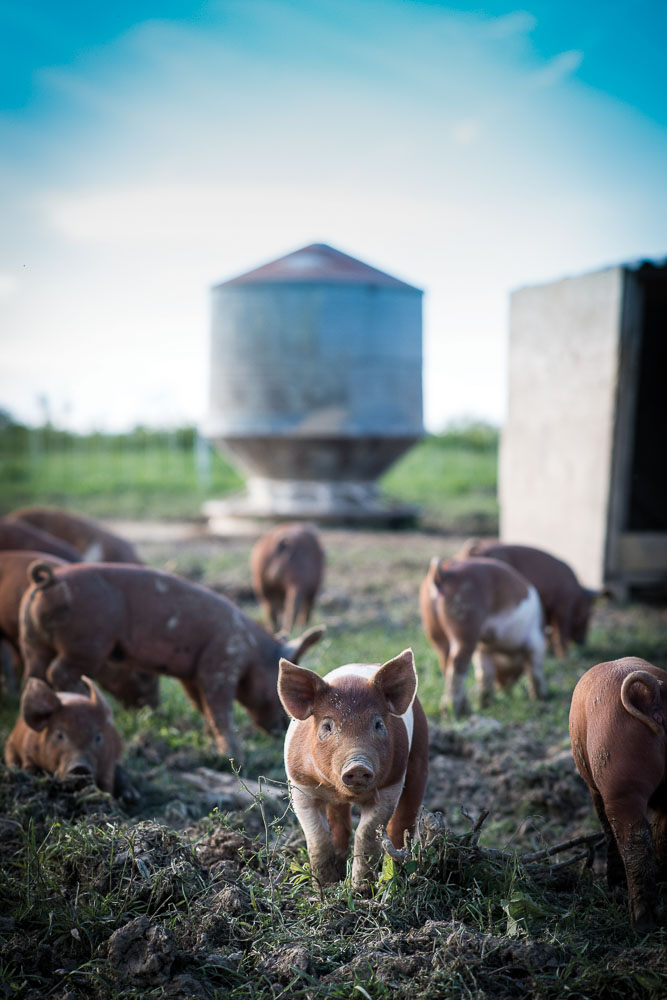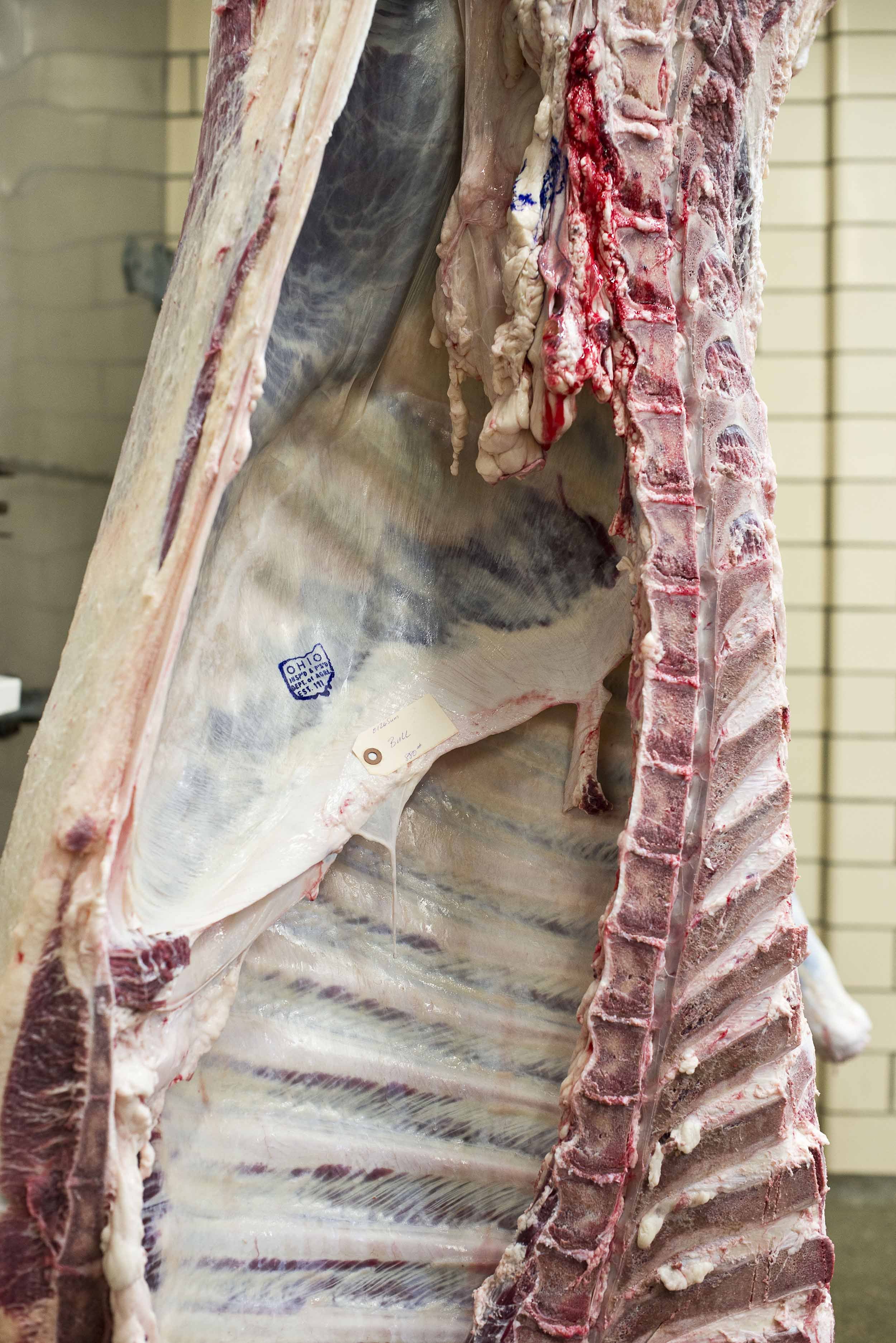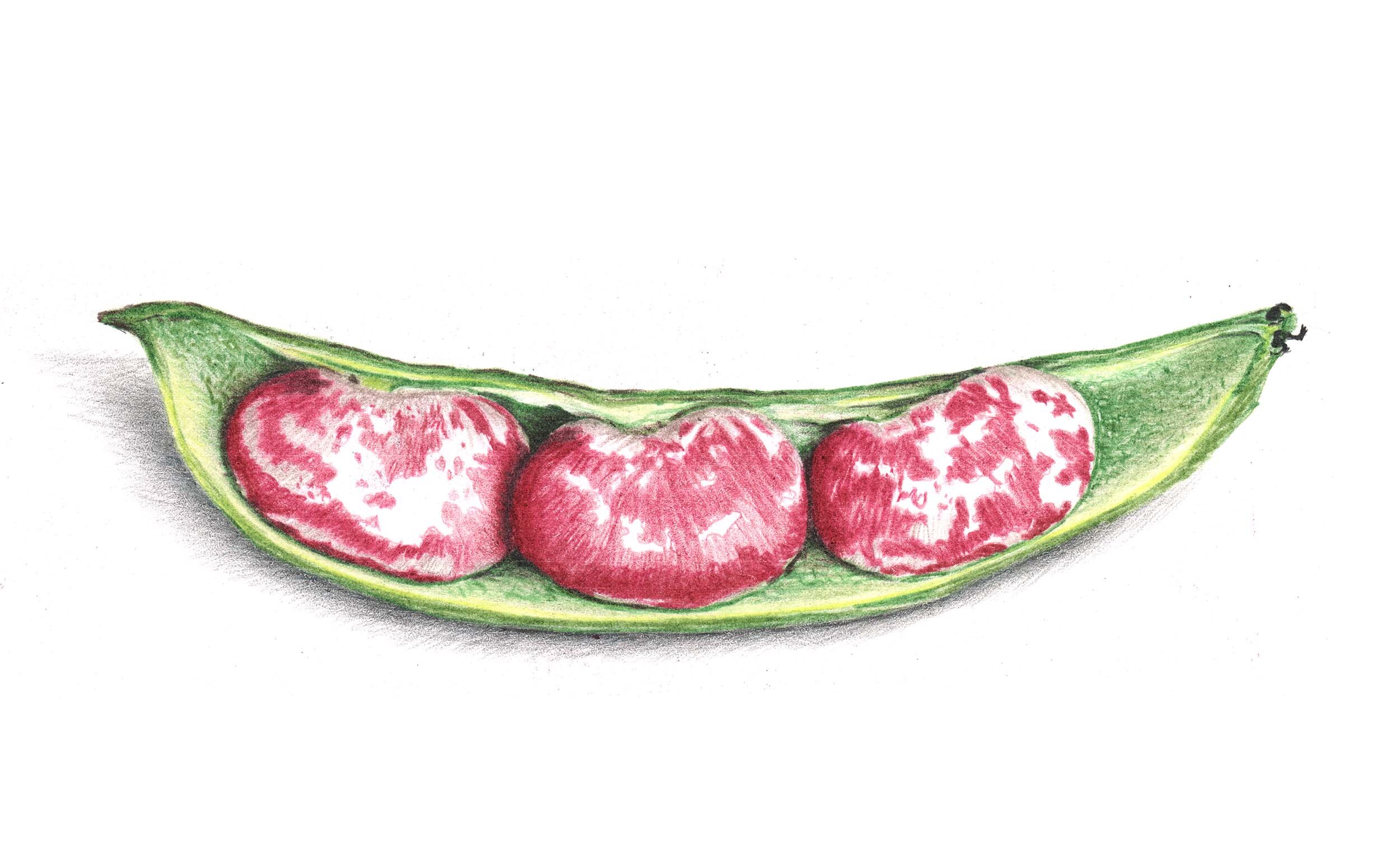Leaving the Edges Wild

As he marks the 200th anniversary of his family’s Clarksville, Ohio, farm, Jon Branstrator looks to preserve the land well into the future.
PHOTOGRAPHY BY MICHAEL WILSON
“Look,” Jon Branstrator says, as we walk through his pumpkin patch, “there’s another monarch.” He never tires of pointing them out as they drift by. Throughout our tour of his farm, as much as his crops, it is these signs of extraneous life that get him excited. The butterflies and hoverflies, the kestrels, the fish jumping in the pond, the patches of wildflowers, and, below the soil, the creeping white threads of fungal life.
None of these things can be sold in the marketplace, but Branstrator seems as proud of them as any of his crops. The existence of all of this life on his land is the earth’s message that he is doing something right.
“The best fertilizer is the farmer’s footsteps.”
It has taken many generations—and many different kinds of agriculture—to bring us to this point. This year, in fact, marks the 200th anniversary of this farmland in Clarksville, OH. In the late 18th century, the land was known as the Virginia Military District, and huge chunks of it were given to soldiers in the Revolutionary War in lieu of payment. Colonel Stephen Mason received 1,000 acres in 1802, and sold 400 of them to Jon’s great-great grandfather, Andrew Branstrator, two years later. Although the land was leased to others for periods of time, the Branstrators have been in the area ever since—and before them, Branstrator says wryly, “Tecumseh.”
Today, Branstrator can walk a hundred yards away—“up where those trees are,” he says, pointing—and come to the grave of his great-great grandfather. This family’s long connection to the land, though, has been accompanied by enormous changes.
Like any piece of agricultural land, Branstrator Farm has been a long conversation about what the farmer wants to grow, what the earth will support, and what the marketplace will reward. It is a conversation that has taken many twists and turns over the years. In just the two decades Branstrator has been running things, he has focused on fruits and vegetables, worked farmers’ markets before switching to wholesale, grown peaches and other fruit, invited customers to pick their own, and even spent a short period running farm festivals and pumpkin patches.
The one constant, though, has been his desire to leave the land better than how he found it, and to spread the word about how others can do the same.
A COMMON HISTORY
Until World War II, Branstrator Farm was like thousands of others in America, producing small quantities of lots of things—dairy, pigs, some vegetables, some grain—but not much financial wealth. Branstrator describes his father as having “escaped the farm,” only to return when he got married. In a decision that was being repeated on thousands of farms around the country, Branstrator’s father decided that he was going to do things the modern way. Enough raising bits of this and that. Instead, corn from fencerow to fencerow, and lots of purchased inputs.
“I grew up moldboard plowing all of these hills,” Branstrator says. The immediate results justified all of the fertilizer and pesticides because they had huge harvests. But the shortcomings of the industrial method soon became apparent. “We had resistant insects, resistant weeds. A multitude of problems,” Branstrator says.
It wasn’t long before the yield began to decrease, along with the prices for what they were growing. As Branstrator came to realize, “It’s a business model that’s good for some, but not good for the earth or good for the farmer.”
Branstrator had always been interested in horticulture, and during the mid 1970s, he started to talk to his father about diversification, and maybe moving the farm in a different direction. “I tried,” he says. “But it caused family fights.”
LEARNING FROM OTHER CULTURES
Eager to escape the situation, he took his interest in plants down to Costa Rica, where he worked in seed breeding. He spent time in Mexico and Central America, soaking in the culture and language and absorbing the wisdom of what he calls the birthplace of agriculture in this hemisphere. “All of these great foods have origin stories as part of Zapotec and Mixtec culture there,” he says.
One of the lessons he drew from his time in Central America was the importance of diversity—not only of growing different crops, but allowing all kinds of life to flourish on your land. The dictionary’s definition of milpa is simply a field of corn, but Branstrator explains that it is much more than that. It is squash and beans and wild tomatilloes, and also the quelites, “what we would call weeds,” Branstrator adds. Things like amaranth and purslane and pápalo that grow wild in the fields and are harvested for the stock pot.
A true milpa is not the elimination of all competition, but a carefully managed flourishing of the cultivated and the wild—a collaboration. From a culture that has lasted 10,000 years, one can learn when it is necessary to intervene, and when it is better to step back and allow other forces to have their way. “Leave the edges wild,” Branstrator says, quoting some lyrics by his friends and neighbors down the road, the band Over the Rhine. It’s clear that this philosophy has influenced many decisions he has made both on his land and in his life.
In 1989, Branstrator returned from Central America to help take care of his mother, who had gotten sick with ALS. About a decade later, when both of his parents had passed away, the farm came to him.
“I had no money,” Branstrator laughs. “I had good credit, though!”
Eventually, Branstrator says, “I assessed my abilities and interests and decided to go into fruit and vegetables.” Through a lot of trial and error, he discovered what he could grow successfully and profitably. There were successes and duds. Some crops grew wonderfully on his land, like gooseberries and currants, but no one seemed to want to buy them. He briefly tried processing some of his own bell peppers, and can only laugh about it now: “Everyone made money but me on that one.”
He sold his vegetables to grocers like Dorothy Lane Market and Pipkin’s, and still sells fall pumpkins to the latter. He recruited local young people to help him work the markets and also some workers from Mexico and Central America. Many of them are still his friends—one of his former market helpers was about to be married on the farm a few days after my visit, and in preparation they built a Covid virus effigy, protein spikes and all, made out of squash.
A NEW DIRECTION
Although Branstrator bubbles with good humor and vitality, his ability to work 80-hour weeks, he says, is not what it used to be. At a certain point, he knew he had to set a different pace. “I was running myself to death each summer,” he says, “trying to keep everybody employed.” About five years ago, he reassessed what he wanted to do on the farm: He took out most of the fruit and perennials, and decided to focus on heritage grains.
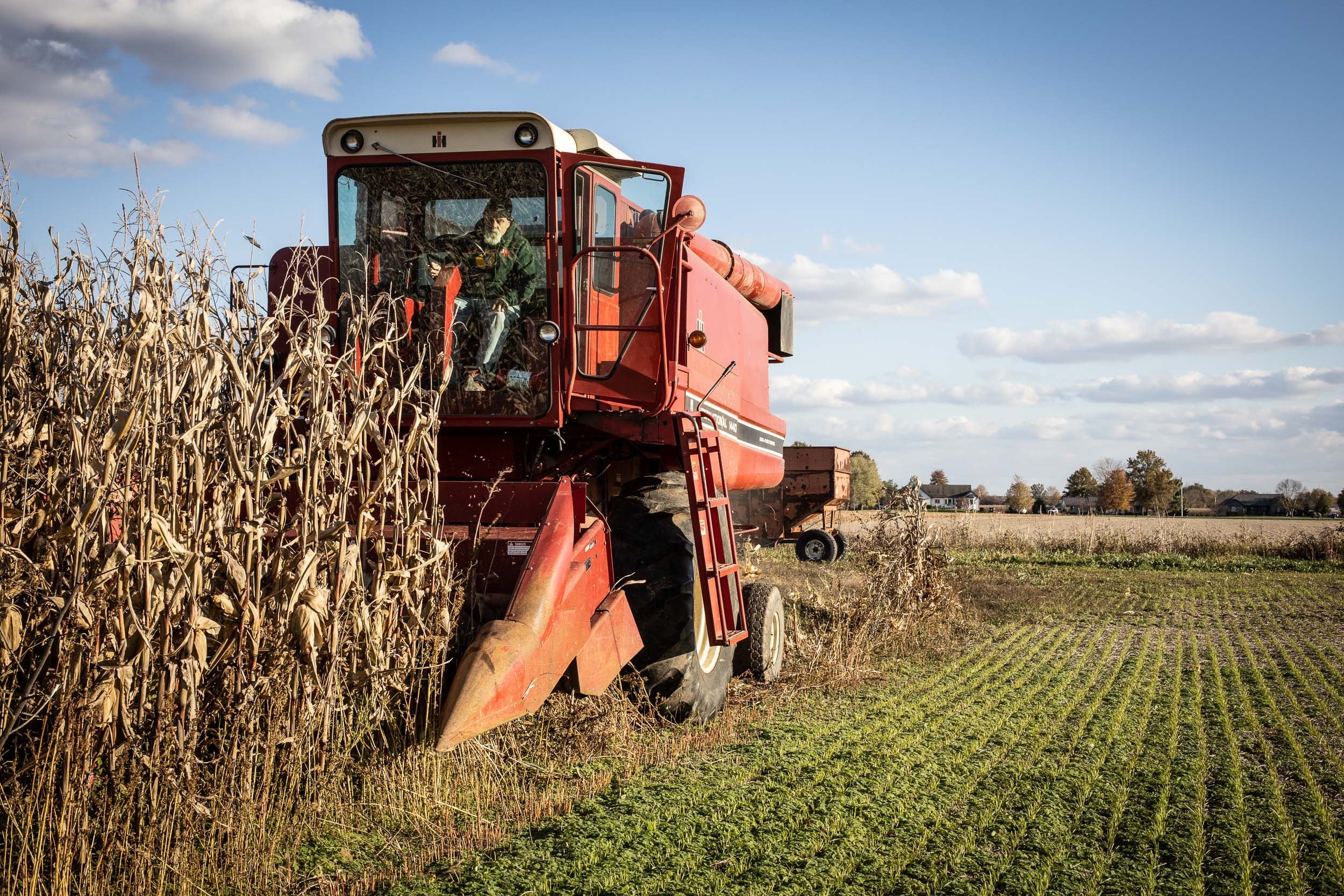
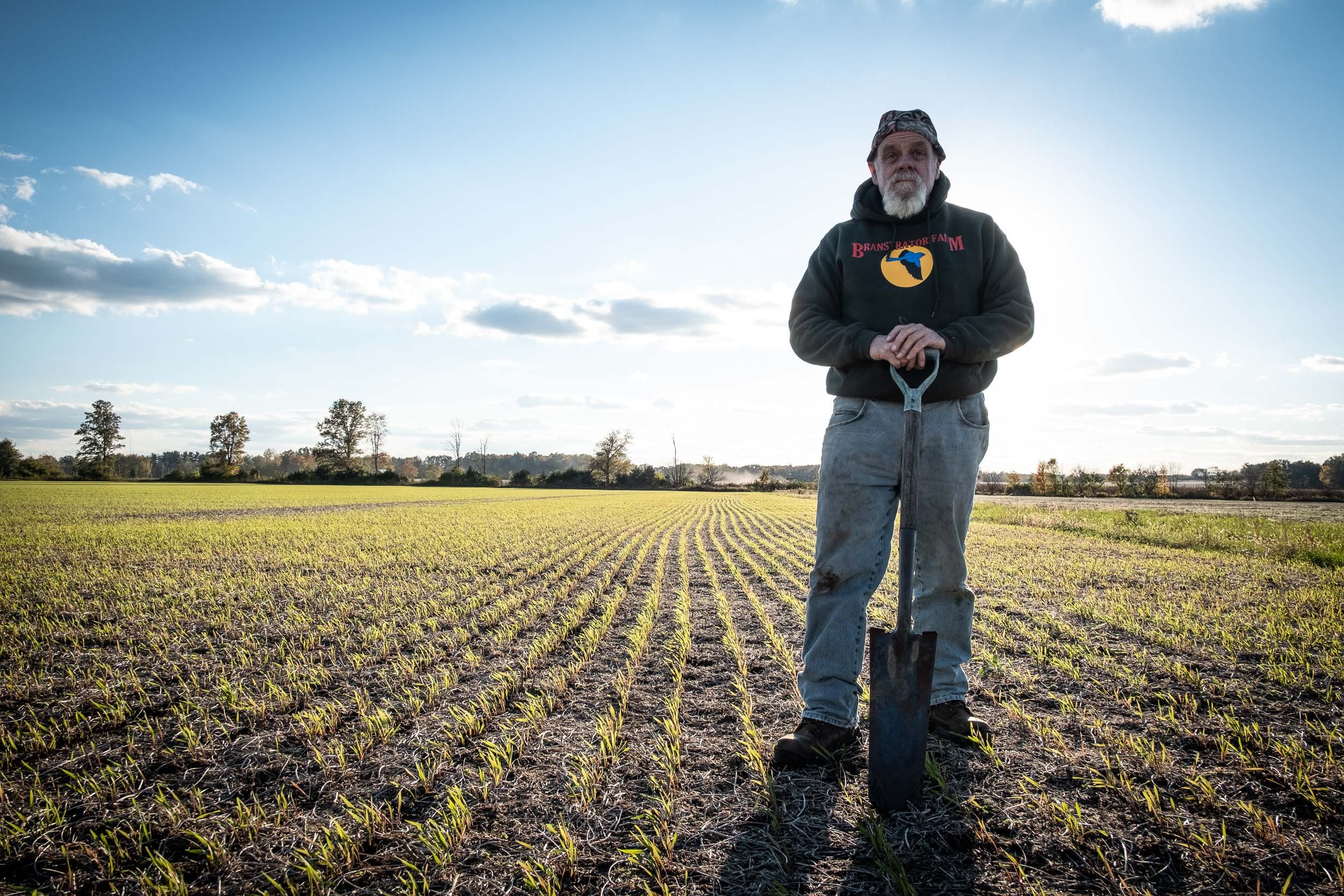
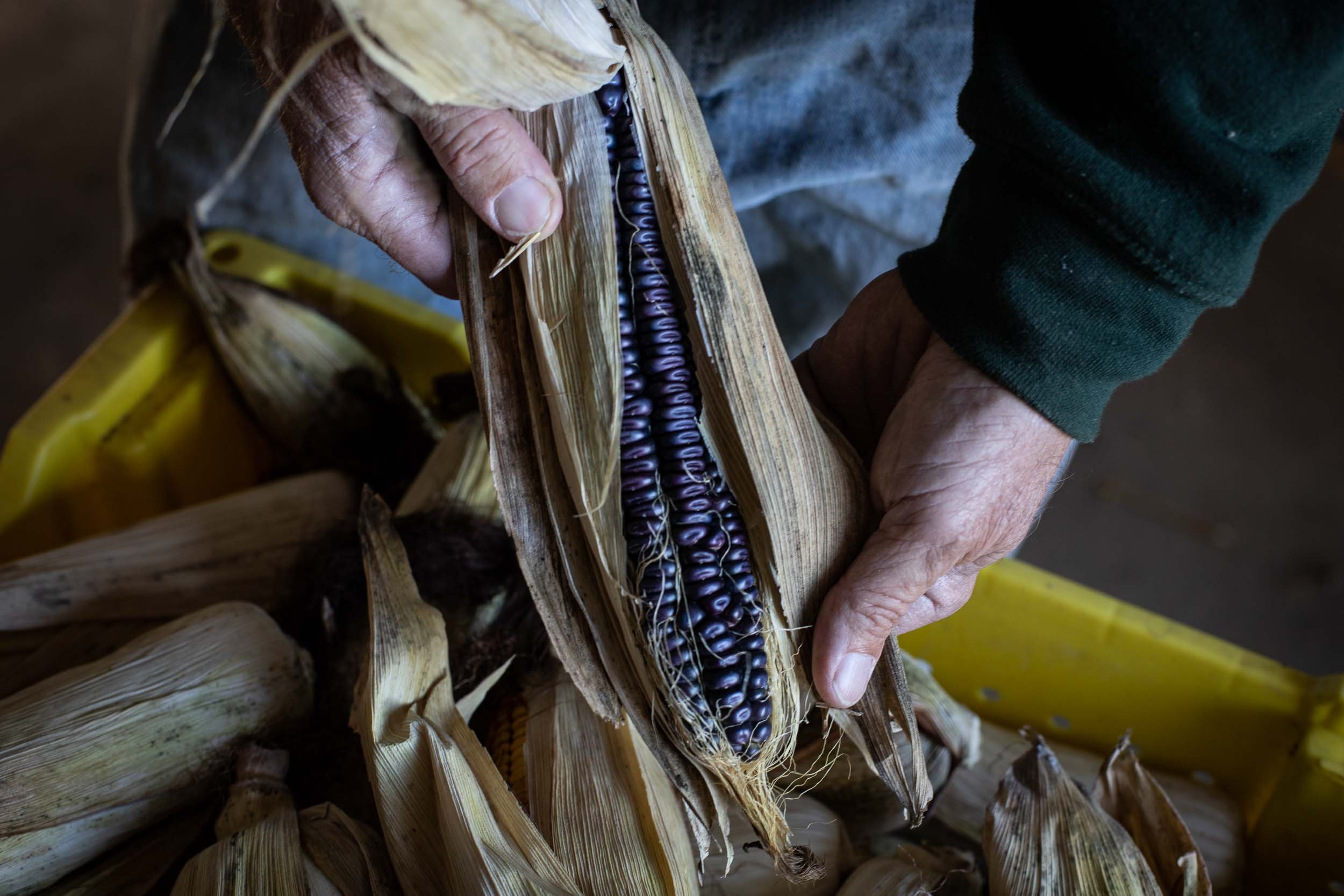
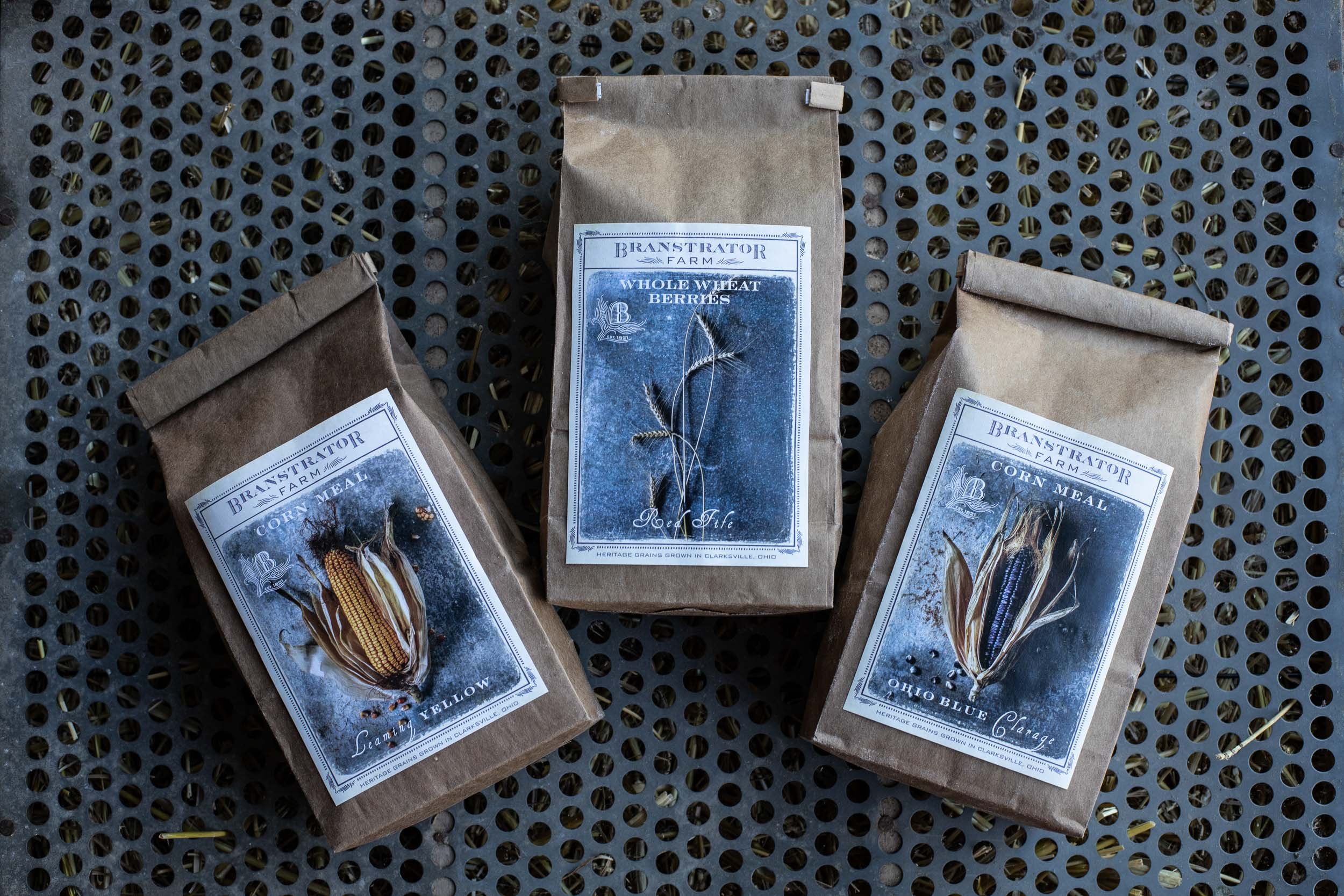
Rather than growing ordinary commodity wheat, which often brings in less by weight than the straw bales that are left over, Branstrator wants to grow the unusual varieties: grains like Red Fife, a hard red winter wheat, along with hard and soft white wheat varieties, Danko Rye, and a breeding plot of naked barley.
During Covid, when everyone started baking at home, there were enormous shortages of flour. Supply chains were disrupted and many large mills couldn’t find labor to keep up with demand. As shelves sat empty and farmers couldn’t get their crop processed, it became clear that the system has actually gotten less stable and responsive as it has gotten larger, and is in desperate need of re-localization.
For many years, Branstrator has been singing the praises of cover crops to his neighbors (he can tout at least one local convert). Through this process, he met Jay Brandt of Walnut Creek Seeds in Carroll, OH, whose main business is cover crop seed mixes. Brandt had the idea of gathering local farmers who were living by regenerative soil health principles and banding them together in a local grain collaborative. The two partnered with Jennifer Kocher of Around the World Gourmet, who was already a miller specializing in gluten-free products, and several others. The new group is called Regenerative Mills, and plans to have their products—locally grown and milled grains—available on local shelves by the winter 2021.
The goal, Branstrator says, is to create new markets so farmers can step away from commodity crops—to help the soil and the farmer’s pocketbook, shorten supply lines, and create economic stability through sales in the community rather than through government assistance to farmers. Local producers are availing themselves of Branstrator’s output: The Common Beer Co. in Mason won a gold medal in the U.S. Open Beer Championship for its Rye Barley Wine made from Branstrator’s grain. And James Luckett of Blue House Bakery in Yellow Springs uses his freshly milled flours. Under the shade of an enormous linden, we ate one of Luckett’s delicious loaves while looking out at the fields that had grown the grain.
Branstrator has a zeal for changing people’s minds, especially farmers in his community. For years, he went to talk to Congress about farmland preservation. Today, he doesn’t take as many trips, but he makes sure his rows of solar panels, for example, are visible from the road. When people pull over, he talks to them about self-sufficiency and his electric bills, and the interesting phenomenon of the utility company owing him money. Across the road from his panels, Branstrator makes sure the field has big sunflowers as part of its cover crop. When families come out and take pictures in the field, he tells them why he is growing them, and how he takes care of the soil.
The old saying is that the best fertilizer is the footsteps of the farmer. Branstrator is always moving around his land, observing. When he noticed some erosion on one hillside, he started planning a little prairie strip of deep-rooted grasses.
After two decades of refining his practices, and seeing what’s worked and what hasn’t, Branstrator knows he has built something special. The topsoil gets deeper and richer each year. Recently, through the Cardinal Land Conservancy and with the help of the Tecumseh Land Trust, Branstrator has secured an easement to make sure his acreage will be forever protected from development.
“This land is too good to grow houses,” he says. Instead, it will remain as it is—for harvests of corn and wheat, for the kestrels and butterflies, and hopefully for some wild-edged humans of the future.
Akshay Ahuja grew up in New Delhi and the suburbs outside Washington, DC, and now lives in College Hill in Cincinnati with his wife and son. His writing often appears in Cincinnati Magazine and The Dark Mountain Project. He loves playing with soil and words, and writes about food, plants, and the arts in their various wild and domesticated forms.

